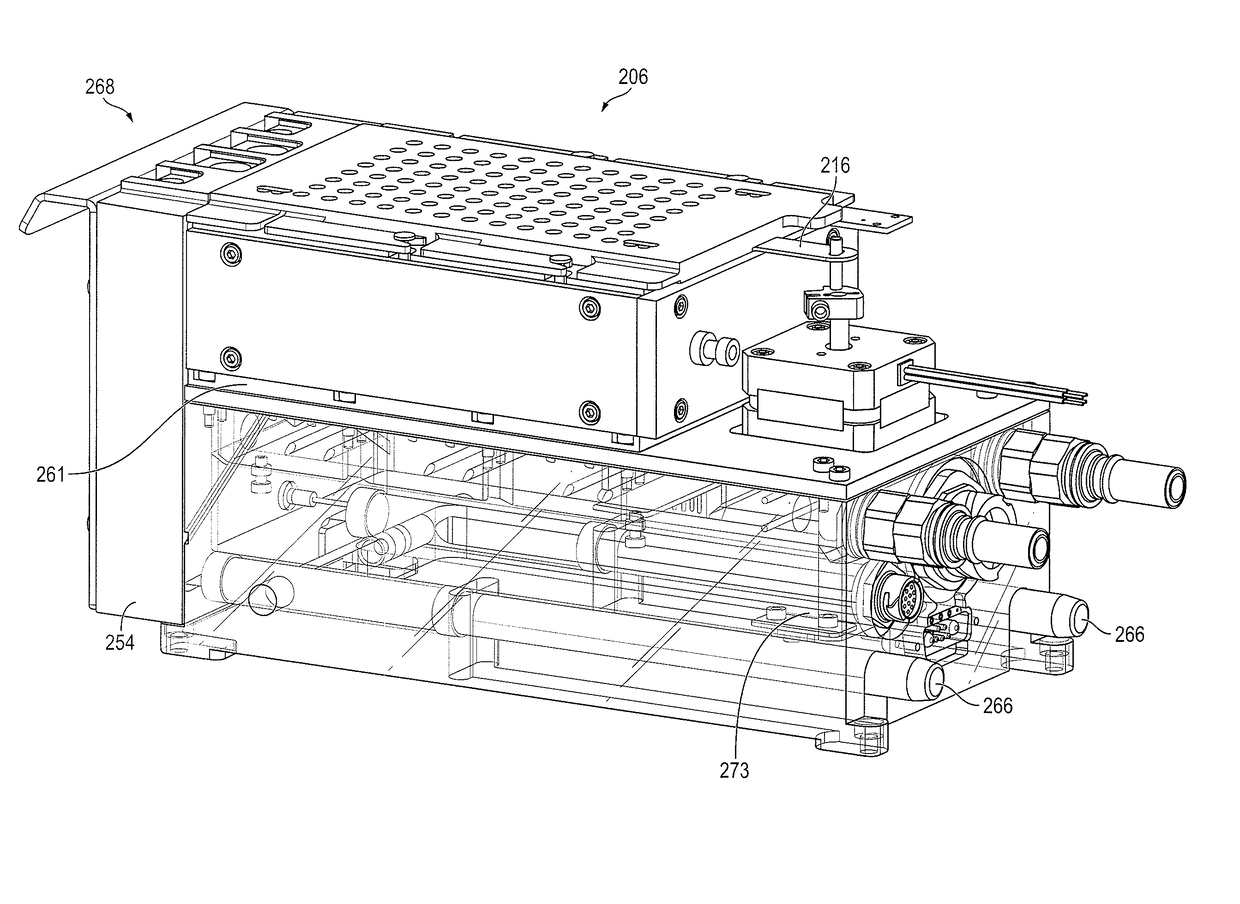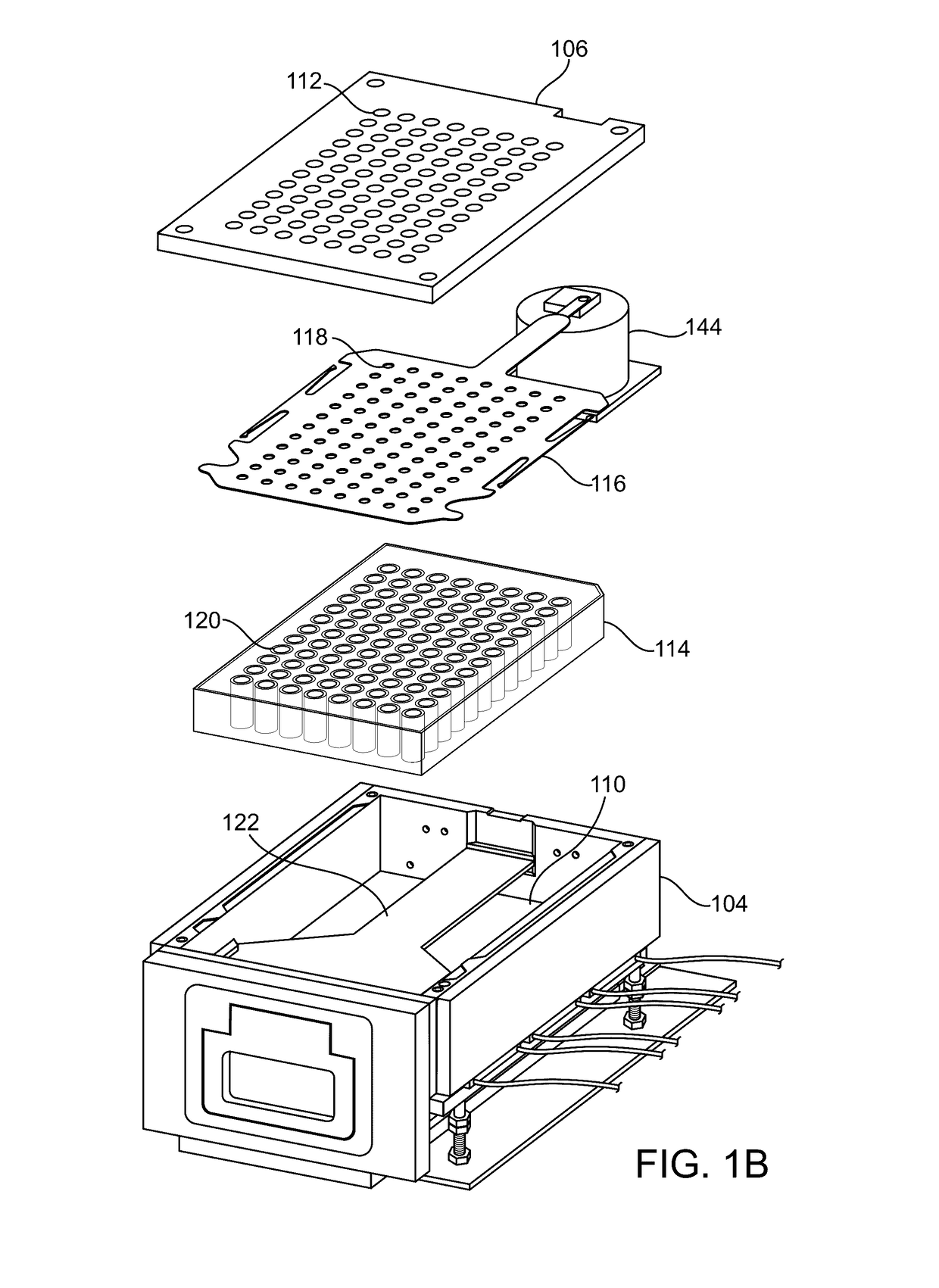Well plate incubator
- Summary
- Abstract
- Description
- Claims
- Application Information
AI Technical Summary
Benefits of technology
Problems solved by technology
Method used
Image
Examples
example 1
Viability in a Well Plate Incubator
[0204]Materials:
[0205]CHO-S cells were obtained from Fisher Scientific (Invitrogen™ Freestyle™ CHO-S cells, catalog #R80007). The cultures were maintained by seeding at 2×105 viable cells / ml and incubating at 37° C., using 5% carbon dioxide in air as the gaseous environment. Cells were split every 2-3 days.
[0206]Culture Medium:
[0207]Freestyle™ Expression Medium (ThermoFisher Scientific, catalog #12651014), an animal origin-free, chemically defined, protein-free medium, was used. It was supplemented with HT Supplement from Gibco (Cat#11067-030) and L-Glutamine 200 mM from Gibco (Cat#25030-081).
[0208]Incubator: Manufactured by Berkeley Lights, Inc., includes a lid, shutter, and temperature and environment inputs as described above. Throughout the experiment, the lid was heated to 38° C., the enclosure surrounding the well plate was heated at 37° C., and the shutter was closed. Atmosphere was air supplemented with 5% CO2, and flow rate into the incuba...
example 2
Viability in a Well Plate Incubator
[0219]Materials:
[0220]OKT3 cells, a murine myeloma hybridoma cell line, are obtained from the ATCC (ATCC® Cat# CRL-8001™). The cells are provided as a suspension cell line. Cultures are maintained by seeding at about 1×105 to about 2×105 viable cells / mL and incubating at 37° C., using 5% carbon dioxide gaseous environment. Cells are split every 2-3 days. OKT3 cell number and viability are counted and cell density is adjusted to 5×105 / ml for loading into well plates for incubation in the continuous access well plate incubator.
[0221]Culture Medium:
[0222]500 ml Iscove's Modified Dulbecco's Medium (IMDM, ATCC® Cat#30-2005), 200 ml Fetal Bovine Serum (ATCC® Cat#30-2020) and 1 ml penicillin-streptomycin (Life Technologies® Cat#15140-122) are combined to make the culture medium. The complete medium is filtered through a 0.22 μm filter and stored away from light at 4° C. until use. The culture medium is conditioned with 5% carbon dioxide in air before intr...
example 3
f OKT3 Cells in a Continuous Access Well Plate Incubator and Transfer to a Microfluidic Device
[0231]Microfluidic Device Materials:
[0232]Microfluidic devices and System: Manufactured by Berkeley Lights, Inc. The system includes at least a flow controller, temperature controller, fluidic medium conditioning and pump component, light source and projector for light activated DEP configurations, mounting stage, and a camera. The microfluidic device includes flow channels and pens for cell isolation, assay, and / or growth, with single pen volume of approximately 1.5×106 μm3.
[0233]Transfer Component of the System:
[0234]A linear stages robot, import / export tip having an outer diameter of 1.067 mm of the microfluidic device.
[0235]Priming Solution for Microfluidic Device:
[0236]The culture medium (as described in Example 2) containing 0.1% Pluronic® F127 (Life Technologies® Cat# P6866).
[0237]Preparation of the Microfluidic Device Prior to Transfer:
[0238]The microfluidic device is loaded onto th...
PUM
 Login to View More
Login to View More Abstract
Description
Claims
Application Information
 Login to View More
Login to View More - R&D
- Intellectual Property
- Life Sciences
- Materials
- Tech Scout
- Unparalleled Data Quality
- Higher Quality Content
- 60% Fewer Hallucinations
Browse by: Latest US Patents, China's latest patents, Technical Efficacy Thesaurus, Application Domain, Technology Topic, Popular Technical Reports.
© 2025 PatSnap. All rights reserved.Legal|Privacy policy|Modern Slavery Act Transparency Statement|Sitemap|About US| Contact US: help@patsnap.com



